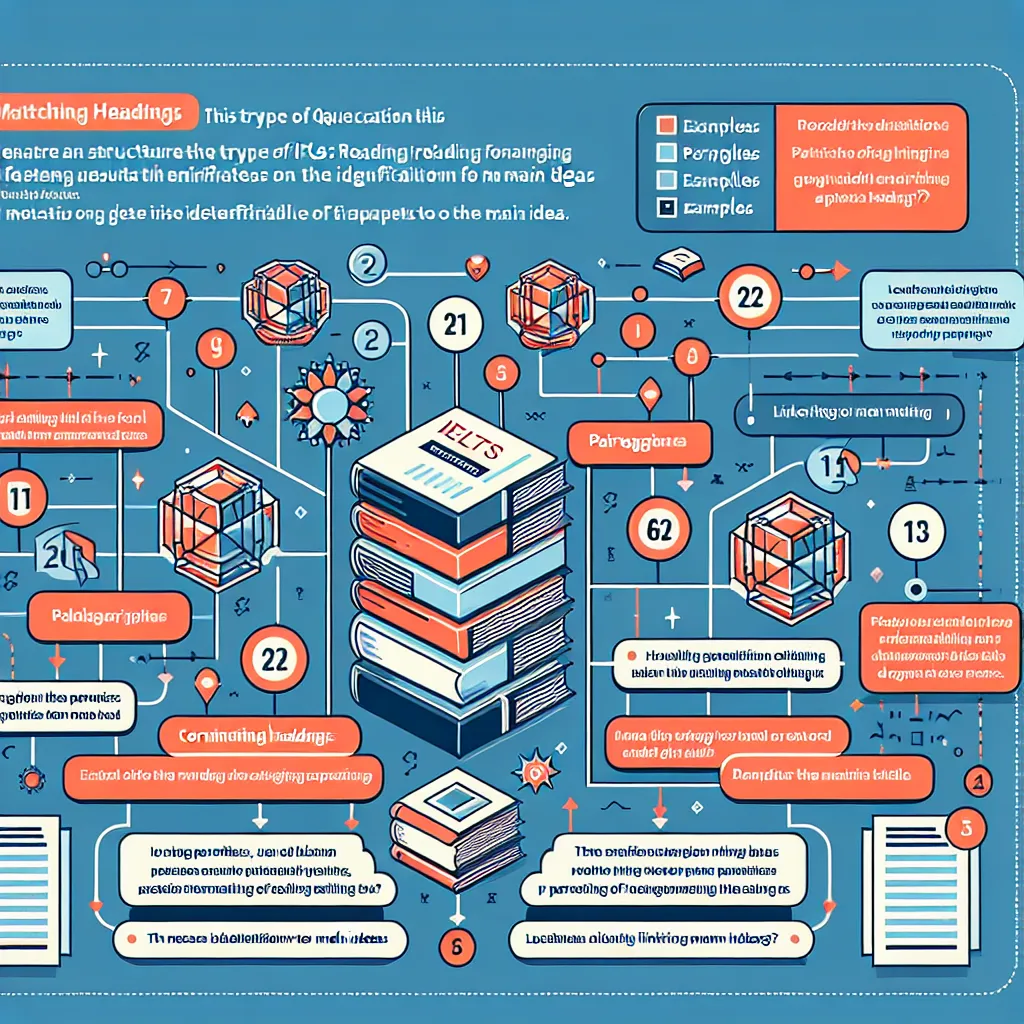Mastering the IELTS Reading section is crucial for achieving a high overall score in the IELTS exam. One of the most challenging question types in this section is matching headings. In this comprehensive guide, we’ll explore the best strategies to tackle IELTS Reading matching headings questions effectively.
Understanding IELTS Reading Matching Headings
Matching headings questions require test-takers to match a list of headings to paragraphs or sections of the given text. This task assesses your ability to identify the main idea or theme of each paragraph quickly and accurately.
 IELTS Reading Matching Headings
IELTS Reading Matching Headings
Why are Matching Headings Questions Important?
- They test your skimming and scanning skills
- They assess your ability to understand the main idea of a paragraph
- They evaluate your capacity to differentiate between key information and supporting details
The Best Approach to IELTS Reading Matching Headings
1. Read the Instructions Carefully
Before diving into the text, make sure you understand the task requirements:
- Check how many headings you need to match
- Note if there are any extra headings not to be used
- Understand if you need to match headings to paragraphs or sections
2. Skim the Headings
Quickly read through the list of headings to get a general idea of the topics covered in the text. This will help you predict the content and structure of the passage.
3. Identify Keywords in Headings
Underline or circle key terms in each heading. These words will guide your search when you read the paragraphs.
4. Scan the Paragraphs
For each paragraph:
- Read the first and last sentences thoroughly
- Quickly skim the middle for supporting details
- Look for words or phrases that match the keywords in the headings
5. Match Headings to Paragraphs
Start with the easiest matches first. This will help you eliminate options and make the remaining matches easier.
6. Use the Process of Elimination
Cross out headings as you use them. This will help you focus on the remaining options and avoid repetition.
7. Double-Check Your Answers
If time allows, reread the paragraphs to confirm your choices. Make sure each heading accurately represents the main idea of its corresponding paragraph.
Common Pitfalls to Avoid
1. Focusing on Specific Details
Remember that headings represent the main idea, not specific examples or minor points within the paragraph.
2. Relying Too Heavily on Familiar Words
Don’t be misled by words that appear in both the heading and the paragraph but aren’t related to the main idea.
3. Ignoring Synonyms and Paraphrasing
Be aware that the main idea in the paragraph may be expressed using different words than those in the heading.
4. Rushing Through the Task
Take your time to understand each paragraph thoroughly. Hasty decisions often lead to incorrect matches.
Practice Techniques for Improvement
1. Summarize Paragraphs
Practice writing one-sentence summaries for paragraphs in English texts. This will help you identify main ideas more quickly.
2. Create Your Own Headings
After reading a paragraph, try to create an appropriate heading for it. Compare your heading with those provided in practice materials.
3. Time Management Drills
Practice matching headings under timed conditions to improve your speed and accuracy.
4. Expand Your Vocabulary
Learn synonyms and paraphrases for common academic terms to help you recognize main ideas expressed in different ways.
 IELTS Reading Practice
IELTS Reading Practice
Next Steps in Your IELTS Preparation
- Integrate regular practice of matching headings questions into your study routine
- Analyze official IELTS Reading practice tests to understand the types of texts and headings used
- Join online IELTS forums to discuss strategies and challenges with other test-takers
- Consider taking a mock IELTS test to assess your progress and identify areas for improvement
By following these strategies and practicing consistently, you’ll be well-equipped to tackle IELTS Reading matching headings questions with confidence. Remember, success in this task comes from a combination of careful reading, strategic thinking, and efficient time management.
[internal_links]
As you continue your IELTS preparation journey, don’t forget to explore other question types in the Reading section and work on improving your overall English language skills. With dedication and the right approach, you’ll be well on your way to achieving your desired IELTS score.




